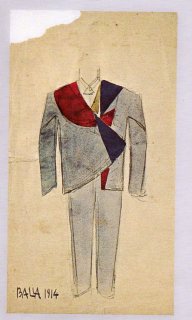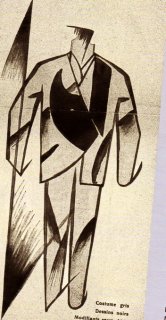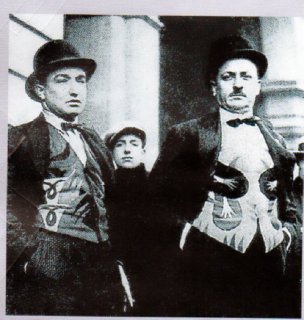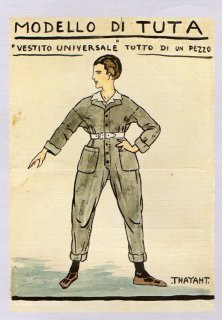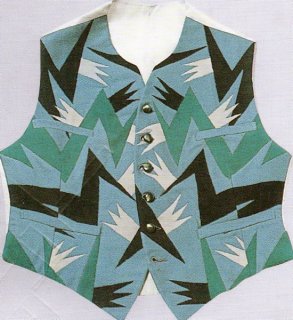April 4, 2008
Art Review | Takashi Murakami
Art With Baggage in Tow
By
ROBERTA SMITH
Who knew that the first Louis Vuitton boutique in Brooklyn would touch down smack in the middle of an exhibition in one of the borough’s most venerable art institutions?
But there it is, at the
Brooklyn Museum, bright and gleaming and blending seamlessly with its setting: a sleek, stylish and sometimes silly survey of the work of
Takashi Murakami. Mr. Murakami, who is frequently called the Japanese
Andy Warhol, is an astute manipulator of visual languages, artistic mediums and business models. The boutique will sell Vuitton bags, wallets and other accessories dotted with the signature Murakami jellyfish eyes, red cherries or pink cherry blossoms for the duration of the exhibition.
Guardians of museum purity were outraged by the Murakami-Vuitton boutique when the show made its debut last fall at the
Museum of Contemporary Art in Los Angeles, where it was organized by Paul Schimmel, that museum’s chief curator. The shop has been criticized for blurring the already fuzzed line between seemingly functional and nonfunctional luxury goods (i.e., art).
But actually it’s an ingenious key to the Pandora’s box of Mr. Murakami’s art and stuffed with questions of art and commerce, high and low, public brand and private expression, mass production and exquisite craft. None of these, it turns out, are ever mutually exclusive. Fuzzing is the point. (And by the way, those who attack a store in an art exhibition might better protest the recent and quite awful redesigns of several of the Brooklyn Museum’s permanent collection galleries.) The Vuitton shop is also one of the visual high points of this show, which has definite ups and downs. The bags, their shiny brass fittings and the impeccable white-enamel display cases achieve an intensity of artifice, tactility and visual buzz that Mr. Murakami’s higher art efforts don’t always muster.
Raised by parents who drummed Western art into him, Mr. Murakami studied traditional nihonga painting, and attempted a career in animation, before deciding to become a contemporary artist. Since emerging in the 1990s Mr. Murakami has often been seen as out-Warholing Warhol by giving back to popular culture, as well as borrowing from it and by excelling at branding. Not for nothing is this show titled “©Murakami.”
But the more interesting comparison may be with hands-on artist-designers like
Louis Comfort Tiffany or William Morris. After all, Mr. Murakami oversees a company, Kaikai Kiki (kaikaikiki means something both elegant and bizarre), that produces his art and its spinoffs. By now it employs around 100 artists, animators, writers and artisans and has an office in Tokyo, two studios in Tokyo suburbs and one in Long Island City, Queens. And of course he belongs to a long tradition of Japanese artists who lavished equal artistry on painted screens, ceramics, calligraphy or lacquerware boxes — which were in some ways the Vuitton bags of their time.
Mr. Murakami siphons motifs from Disney and Dalí, strategies from Pop Art, and sexual fantasies from Japan’s anime (animation) and manga (comics) subcultures. His cast of variously cute, erotic or grotesque creatures and intense decorative pilings-on range across paintings, sculptures, animations and wallpaper, building at times to a hallucinatory intensity that has more than a touch of darkness.
One example is the riot of manically cheerful flowers created by the combination of wallpaper, paintings and one sculpture in a large gallery. The blooms look like petal-ringed smiley faces, only better — and crazier. The ensemble fulfills almost too completely Mr. Murakami’s stated desire to make art “that makes your mind go blank, that leaves you gaping.”
At the opposite pole of such relentless innocence are two life-size but hardly lifelike sculptures of anime-manga derivation: “Hiropon,” a busty woman, and “My Lonesome Cowboy,” her well-endowed male consort. Both are mostly naked, with streams of bodily fluids spewing from various body parts. Like Mr. Murakami’s paintings of mushroom-cloud skulls, these renditions of Eve and Adam have been interpreted as comments on a collective Japanese psyche traumatized and infantilized by World War II, the dropping of the atom bombs and the lengthy American occupation. Whatever. They are sensationally sexy and sexist at the same time.
Most of Mr. Murakami’s creatures recur in an array of toys, T-shirts, pins and decals fabricated at Kaikai Kiki. Many of these are on display (but not for sale) one floor below the Vuitton boutique. The connecting staircase, covered with skulls-and-camouflage wall paper overlaid with big mushroom-cloud skulls, provides a “vanitas” moment to reflect on mortality. But there’s still time for worldly possessions: Nearly all the Kaikai Kiki items are on sale in the gift shop.
This show begins with work dating from 1991, but it doesn’t gain traction until the late 1990s. It defines Mr. Murakami, now 46, as a late-blooming talent with a steep learning curve. Interestingly, most of his best works were made after 2001, the year he started working with Vuitton.
The exhibition’s spine is formed by the demonic mutations of the artist’s signatory and most ubiquitous character, Mr. DOB, the Mickey Mouse derivative that is something of a self-portrait. (The name is a condensed version of the Japanese for “why?” — the eternal existential question.) Splitting, multiplying, flashing jagged teeth and shapeshifting almost beyond recognition, Mr. DOB appears here as an enormous inflatable, a sculpture menaced by colorful mushrooms, on flagstonelike floor covering and in way too many slick, brittle paintings. Luckily other experiences like the flower room and the Vuitton boutique balance things out.
One is the enchanting 23-foot-tall “Tongari-kun” (or “Mr. Pointy”), a space-alien, 18-armed Buddha on a lotus throne surrounded by four guardians that dominates the museum’s lobby. Its sinuous designs and rich colors evoke a fusion of Surrealism, Art Nouveau and Japanese kimonos. The label counters by pointing out that the palette and symbols are inspired by Maya art and Tibetan Buddhist imagery.
Even more spellbinding is a new animation dreamed up by Mr. Murakami and his Kaikai Kiki cohort (the credits take several minutes). “Planting the Seeds,” an instant classic, stars Kaikai and Kiki, two spirit guides in footy pajamas who are probably descended from Mr. DOB. They travel the world in a living spacecraft that gives new meaning to the term “mother ship.” Extraordinarily beautiful, with a deeply Japanese respect for nature, the tale suggests that there is no such thing as waste through a hilarious emphasis on manure — or as the three-eyed Kiki squeaks at the top of his/her tiny lungs, “Poop??!!”
And, finally, in the last two galleries of the exhibition, Mr. Murakami’s painting explodes with a new complexity of color and meaning, matching the intensity of the flower room, but without the mind-blanking repetition. The combination of scale, rich detail and brilliant color and compositional and narrative drama is riveting. In “Tan Tan Bo” (2001) Mr. DOB is reincarnated in a kaleidoscope of color whose mixture of geometric and biomorphic forms is a kind of comic summation of modernist abstraction. “Tan Tan Bo Puking” (2002) is a Daliesque apocalypse: Mr. DOB in his death throes with globs of brilliant color spilling from his jagged teeth, and strange protrusions, at once foul and gorgeous, erupting all over his enormous head. One culminates in a golden hand that meets another hand in a flash of light. And in the lower right, the Kiki stands among four Shinto staffs dangling with sacred paper that signal the soul crossing to the afterlife.
In the show’s final four paintings, all from the last two years, different Japanese art forms, materials and styles create a great contrapuntal energy. In “727-727,” Mr. DOB’s snarling head bounces on an elegant unfurling wave, against layers of sanded colors that encompass the entire spectrum, and evoke ancient screens and Warhol’s Oxidation paintings as well as atomic radiation.
Two large portraits of Daruma, the revered sixth-century Indian monk who introduced Zen Buddhism to China, mimic the calligraphic flair of ink painting (writ very large) but on surfaces of gold, silver and titanium leaf customary for screen painting. The fourth painting introduces a new character, Chibi Kinoko, or Little Mushroom, a wan creature with some of the strangeness of the mushroom-cloud skull and seen against a shiny hard surface of pale green squares that suggest both digitalization and lacquer. One leaves this show feeling that Mr. Murakami has found a new benign Pandora’s box: the richness of traditional Japanese art.
“©Murakami” is at the Brooklyn Museum through July 13; 200 Eastern Parkway, Brooklyn, (718) 638-5000.



![00030m[1].jpg](https://thefashionspot-data.community.forum/attachments/569/569899-9d91e74669861528c7cc0d6937a49563.jpg?hash=nZHnRmmGFS)
![00150m[1].jpg](https://thefashionspot-data.community.forum/attachments/569/569901-9c71339d1d5c36119e6b7fbaba7ba198.jpg?hash=nHEznR1cNh)
![9545[1].jpg](https://thefashionspot-data.community.forum/attachments/569/569903-3b0d7a0e2ebda5a8a556e176451a636e.jpg?hash=Ow16Di69pa)
![837480[1].jpg](https://thefashionspot-data.community.forum/attachments/569/569905-f006fdbfe85a5c068c8e148805273daf.jpg?hash=8Ab9v-haXA)
![kara_walker_002_lg[1].jpg](https://thefashionspot-data.community.forum/attachments/569/569907-9756ea85f69d87c5721c17d4d9f857f9.jpg?hash=l1bqhfadh8)













